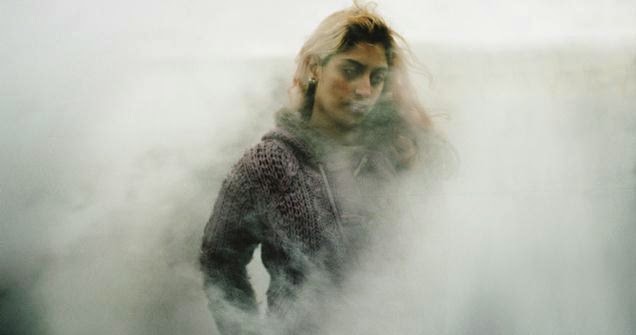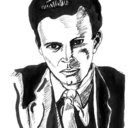Cast: Jean Dujardin, Gilles Lellouche, Céline Sallette, Cyril Lecomte,
Marseilles, in the 1960s, was the heroin capital of the world. Post-war migration saw an influx of Corsican mobsters to the sleepy industrial port city, who brought connections to Turkish opium, and opened up the lucrative American market. By 1969 the Marseilles mob was responsible for around 90% of all heroin arriving into the United States… and all of this just as Nixon’s War on Drugs was heating up. The mobsters took control of the city’s bars and clubs, spreading their influence throughout the police force and political establishment. The Marseilles authorities, under fire from the DEA, were powerless to act. The mobsters gradually unified under one title: La France, or, translated… The French Connection. Their leader: a tyrannical ex-enforcer by the name of Tany Zampa.
The Connection tells the real life story of a fearless young judge, Pierre Michel (Dujardin), who would stop at nothing to bring Zampa down. Michel is a puritanical workaholic: an ex-gambler, driven by some unflinching moral desire to eradicate heroin from his city. From day one, it’s clear he means business. “We’ll find charges later” becomes something of a catchphrase. He’s not scared of the Connection, and he’s not above using dirty tricks like planting evidence and arresting mobsters wives to slowly choke Zampa into submission. He alienates loved ones, colleagues, and powerful figures in the judiciary as he embarks on his crazed one-man crusade.
The Connection could be seen as a sister film to William Friedkin’s The French Connection, exploring what really happened in Marseilles while Popeye Doyle was skulking around a grey and lifeless New York City. The irony is that while Friedkin’s film was fictionalised, it was handled with a greater respect for realism and the slow burn of honest drama. Marseilles native Cédric Jimenez – who grew up in the era of the Connection and counts Zampa’s daughter amongst his group of friends – has eschewed such high-mindedness in favour of all-out genre fare. The Connection is a big, blustery Cops ‘n’ Robbers crime film. It feels more like a descendent of Scorcese’s ballsy, cocaine-fuelled storytelling circa Goodfellas and Casino.
The film is lavish in its production design and styling. While Friedkin was making a ‘present day’ film back in 1971, and had to make do with Irish cops wrapped up in grey wool coats on blustery New York wharfs, Jimenez takes great pleasure in depicting the most romanticised vision of 1970s Marseilles – ovular sports cars, azure seas, Gallic hippie rock music, coiffured hair and well cut suits.
It’s a classic genre story: the lowly puritanical cop slowly closing in on the purring, all-powerful alpha kingpin, hiding in plain sight. It’s familiar. We see the tale unfolding before our eyes from the beginning. But that doesn’t make it any less enjoyable. It’s a fast-paced story, confidently told. Originality takes a backseat, allowing adrenaline and smooth-talking charm to take the wheel.
Marseilles, in the 1960s, was the heroin capital of the world. Post-war migration saw an influx of Corsican mobsters to the sleepy industrial port city, who brought connections to Turkish opium, and opened up the lucrative American market. By 1969 the Marseilles mob was responsible for around 90% of all heroin arriving into the United States… and all of this just as Nixon’s War on Drugs was heating up. The mobsters took control of the city’s bars and clubs, spreading their influence throughout the police force and political establishment. The Marseilles authorities, under fire from the DEA, were powerless to act. The mobsters gradually unified under one title: La France, or, translated… The French Connection. Their leader: a tyrannical ex-enforcer by the name of Tany Zampa.
The Connection tells the real life story of a fearless young judge, Pierre Michel (Dujardin), who would stop at nothing to bring Zampa down. Michel is a puritanical workaholic: an ex-gambler, driven by some unflinching moral desire to eradicate heroin from his city. From day one, it’s clear he means business. “We’ll find charges later” becomes something of a catchphrase. He’s not scared of the Connection, and he’s not above using dirty tricks like planting evidence and arresting mobsters wives to slowly choke Zampa into submission. He alienates loved ones, colleagues, and powerful figures in the judiciary as he embarks on his crazed one-man crusade.
The Connection could be seen as a sister film to William Friedkin’s The French Connection, exploring what really happened in Marseilles while Popeye Doyle was skulking around a grey and lifeless New York City. The irony is that while Friedkin’s film was fictionalised, it was handled with a greater respect for realism and the slow burn of honest drama. Marseilles native Cédric Jimenez – who grew up in the era of the Connection and counts Zampa’s daughter amongst his group of friends – has eschewed such high-mindedness in favour of all-out genre fare. The Connection is a big, blustery Cops ‘n’ Robbers crime film. It feels more like a descendent of Scorcese’s ballsy, cocaine-fuelled storytelling circa Goodfellas and Casino.
The film is lavish in its production design and styling. While Friedkin was making a ‘present day’ film back in 1971, and had to make do with Irish cops wrapped up in grey wool coats on blustery New York wharfs, Jimenez takes great pleasure in depicting the most romanticised vision of 1970s Marseilles – ovular sports cars, azure seas, Gallic hippie rock music, coiffured hair and well cut suits.
It’s a classic genre story: the lowly puritanical cop slowly closing in on the purring, all-powerful alpha kingpin, hiding in plain sight. It’s familiar. We see the tale unfolding before our eyes from the beginning. But that doesn’t make it any less enjoyable. It’s a fast-paced story, confidently told. Originality takes a backseat, allowing adrenaline and smooth-talking charm to take the wheel.










